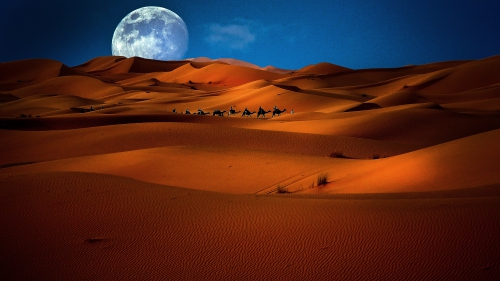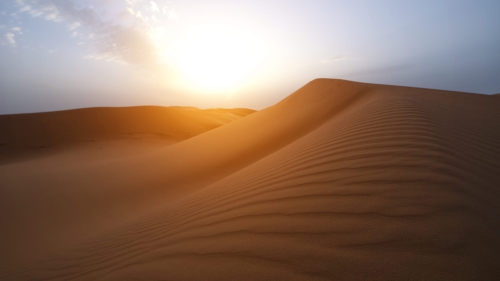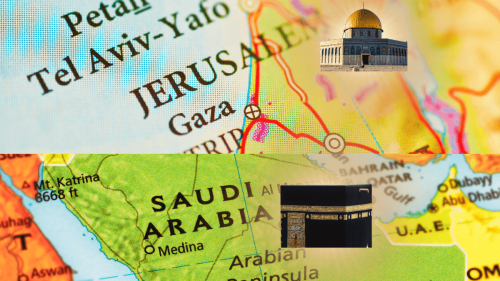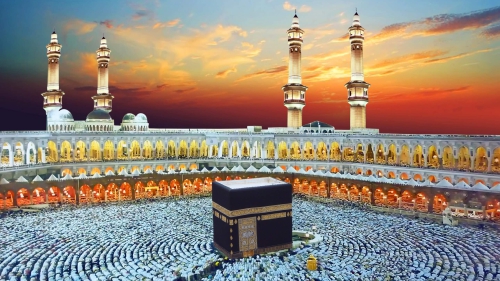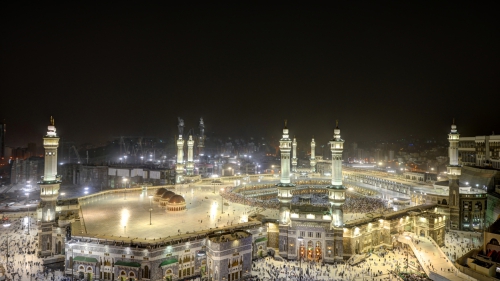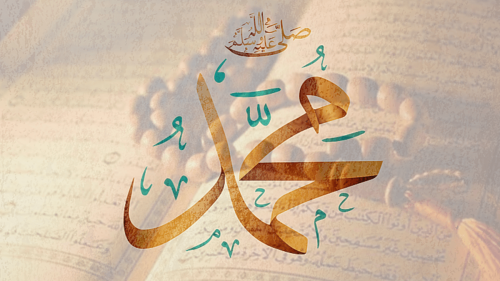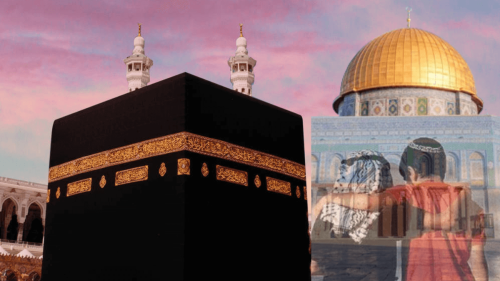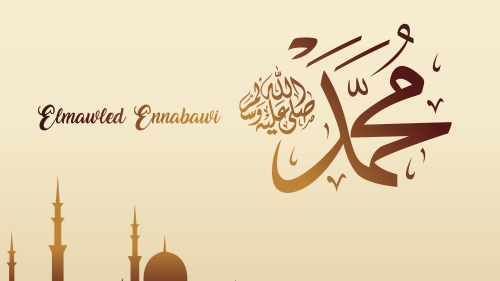Ibn Battuta's Journey to Mecca and 1001 Inventions
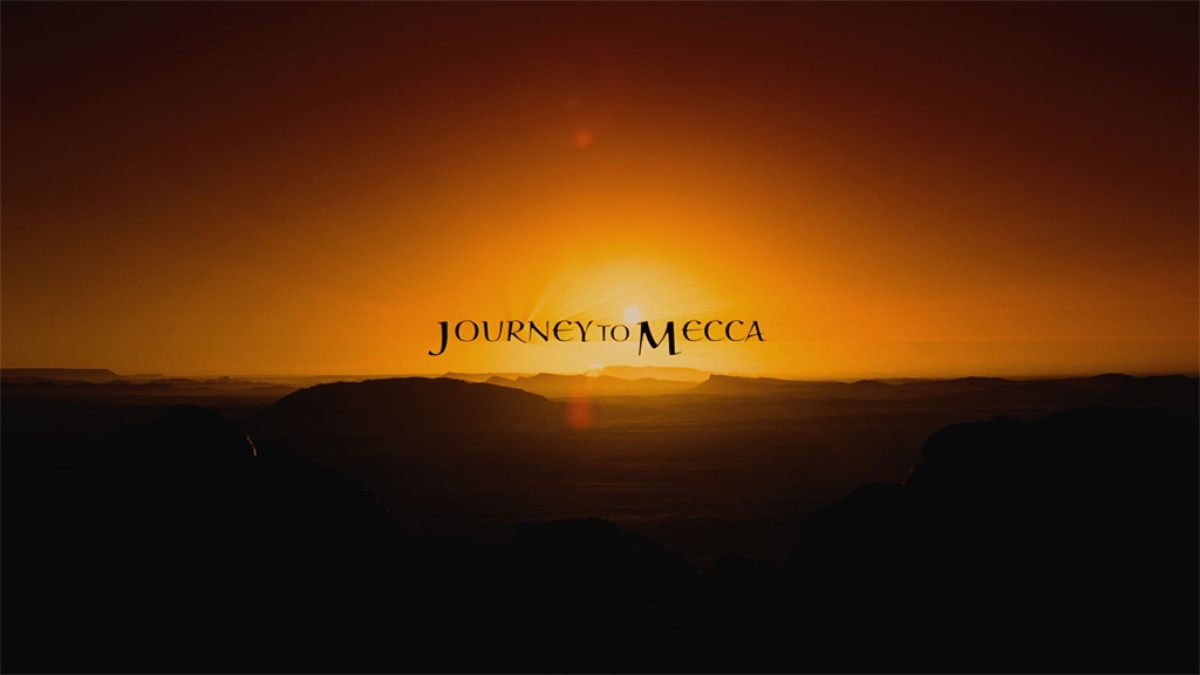
Journey to Mecca - In the footsteps of Ibn Battuta, the IMAX film, returned to Los Angeles by popular demand, thanks to IslamiCity that made arrangements to show this film in Southern California on December 11, & 12, 2011 at the IMAX Theater of the California Science Center (CSC) in Los Angeles. The film was first shown here in 2009.
This movie took viewers closer to the Kaaba, the house of Allah, Almighty God, which many in the audience had visited and many who never had an opportunity to visit. Ibn Battuta took eighteen months to travel from Morocco to Mecca to perform Hajj. The viewers had the opportunity to follow the travel route Ibn Battuta took to complete Hajj. His intentions were to perform Hajj and return home, but he moved onward and went around the world and took 29 years to complete his journey. He visited West Africa, Spain, India, China and many places around the world and covered 75,000 miles.
IslamiCity turned this into a big event for the people living in Southern California. The movie was shown to more than 1,600 people on December 11 & 12, 2011. The audience included people of different cultures and faiths from all over Southern California. Before the start of the film, the CEO of IslamiCity welcomed each show's audience enthusiastically, giving some back ground on IslamiCity and the film. A slide presentation by the CEO of IslamiCity provided valuable information about Ibn Battuta, Hajj pilgrimage, and his world travel.
Some of those in the audience watching the film cried during the film by seeing Kaaba, the house of Almighty God, on the big IMAX screen, so close yet so far.
The 21 years old Ibn Battuta saw a dream and later told his friend Hamza, "I flew on the wings of a giant bird to Cairo, up the Nile, then I crossed the Red Sea to Mecca." His dream did not end in Mecca, he went onward. In the year 1325 CE, he decided to make the 3000 miles journey from Tangiers, Morocco, to Mecca. In Cairo, Ibn Battuta told Ibn Muzaffar his intention to move onward after his Hajj pilgrimage. Ibn Muzaffar talked to him about his journey and said, "Our Prophet Muhammad had said, 'Go in search of knowledge, even if your journey takes you to China.' Ibn Battuta made the journey in 1325 and the audience in the IMAX theatre in Los Angeles in 2011 also went on a journey and found that it was an awesome journey that touched their body, heart and soul.
This film was showed at a time when the California Science Center in Los Angeles was hosting the "1001 Inventions" exhibition. The invention was running from July 2011 to December 2011; later extended by 10 weeks to March 11, 2012 by popular demand. The exhibition is about the groundbreaking scientific and technological advances pioneered during the Golden Age of Islamic civilization.
A book was on sale at the California Science Center listed all the scientific achievements made by Muslims during the eight hundred years from seventh to fourteenth century. A review says: The Islamic society's often overlooked achievements are shared in 1001 INVENTIONS: The Enduring Legacy of Muslim Civilization (National Geographic; ISBN 978-1-4262-0934; on sale Feb. 28; $28), the companion book to the blockbuster exhibition "1001 Inventions," currently at the California Science Center in Los Angeles and opening at the National Geographic Museum in Washington, D.C., in June 2012. Many of the most important scientific and technological discoveries and building blocks of modern civilization came out of Muslim society during the centuries after the fall of ancient Rome - a period known as the Dark Ages in European civilization. But while the Western World was in doldrums, a renaissance was occurring in the Muslim world. The book highlights these outstanding achievements and the people behind them."
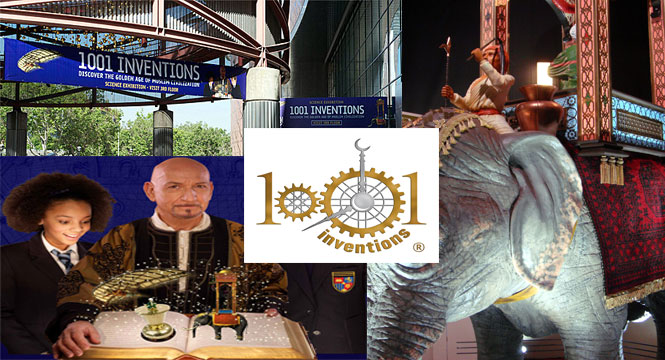 |
IslamiCity obtained permission from the California Science Center authorities to allow the audience to visit 1001 Inventions exhibition after every show of the film. The film goers enjoyed the exhibit which was opened for them after each show. The exhibit consisted of: 1001 Inventions, Discover a Golden Age of Muslim Civilization, and exhibit films . In one of the exhibit films, actor Ben Kingsley talked to children and gave them additional information to understand the origin of scientific achievements first introduced by Muslim scientists, engineers and builders. In one of the scene it showed Abbas Ibn Firnas (810-887 CE), who designed, fabricated and built a set of wings and attempted flying with evidence of some success. He was the first person in human history to do so. The world has recognized Abbas Ibn Firnas' vision, courage and attempts to fly like a bird. In his honor, a lunar impact crater on the far side of the Moon has been named Ibn Firnas.
Abbas Ibn Firnas' attempts to fly were real. Then flying carpet came and stories associated with them. As a young boy, I learned from my family sources that the English teachers who came to India to teach English at various schools at the beginning of the 20th century were making fun of the stories associated with flying carpet and telling everyone including the children in the classrooms that it is impossible for human beings to fly. During the same decade Wright brothers in the United States were making attempts to fly their crudely designed airplane. The rest is history.
It has been said time and again that Europe was in dark ages when the golden age of science was flourishing in Islamic world. At this point, I would like to mention about the world famous Swords of Damascus. In 1963/64 my Metallurgy Professor mentioned about most beautiful and scientifically fabricated blades of swords manufactured in Damascus. During the lecture he said, "The blade of the sword was fabricated by using the ninth century fabrication process which is still being used today, involving heating the blade, hammering to reduce thickness, performing air quenching, water quenching and oil quenching operations to produce best quality and scientifically fabricated perfect sword."
"A ninth century Arab rode his most beautiful and expensive horse to the designated oasis where he had established his work shop. Here, he placed the steel blade in fire, heated it, removed from fire, beat with hammer, returned in fire and repeated the process. Then he removed it, swung in the air , this is air quenching. Second time he repeated heating and hammering operations, picked up the blade and dropped in a container full of water; this is water quenching. Third time, he picked up the hot thin blade and walked to his horse and pierced it in horse's stomach; this is oil quenching. Later, he completed other mechanical assembly details to make a perfect sword. He sacrificed his best & most beautiful horse to produce the best sword. Now, you know why Damascus swords were the best swords in the whole world. The Arabs knew their metallurgy."
The scientists, engineers and inventors of those days were thorough in performing tasks and paying minute attention to details of designed processes, methods and procedures to fabricate and make things. In the fourteenth century, the golden age of scientific achievements abruptly came to an end. This point has been discussed and debated in the last two centuries.
Bernard Grunn wrote a book entitled The Timetable of History - A Horizontal Linkage of People and Events. It was published by Simon and Schuster, New York in 1982. The recorded achievements of Muslims given in that book are from seventh century (Year 650: News Services. The Caliph Introduced the First Organized News Service. 695: Coin; First Arab Coinage.) to fourteenth century (1352: Ibn Battuta explores Sahara Desert.) http://www.IslamiCity.com/articles/Articles.asp?ref=IC1106-4704
One of the best answers about the golden age of Muslim civilization has been provided by Rabbi Chaim Sedler Feller of University of California, Los Angeles. One of the e-mails received by me from my friend Omar Huda during the last quarter of 2011 is really an eye opener. He wrote, "Thanks Hadi bhai for sharing the sobering thought! Apparently a moment of reflection is setting in among some of us! What the rant is missing is that Muslims have also lost their history from where they can draw some inspiration. In California Science Center in Los Angeles, there is huge exhibit going on right now thru December: "Golden Age of Islam - Muslim Inventions of the Past"! Go see it and draw some inspiration. Perhaps you will want to close down some of the Madrassas and turn them into science labs!! In the days immediately after 911, I attended a class by Rabi Chaim Sedler Feller at UCLA. Someone asked him, "When Jews and the West have so many Nobel Prizes, why do Muslims have so few?" He answered, "If there were Noble Prizes in the Middle Ages, they would all go to the Muslims! But the West would not have even known about them because they were in 'Dark Ages' at the time!" -- Omar Huda
Muslims have no choice but to reflect, work hard, and set their priorities in order to move forward. They will have to take lead in making things happen.
*****
Mohammad Yacoob is a retired Industrial Engineer and Engineering Proposals Analyst who lives in Los Angeles, California.
Topics: Ibn Battuta, Makkah (Mecca)
Views: 9926
Related Suggestions






